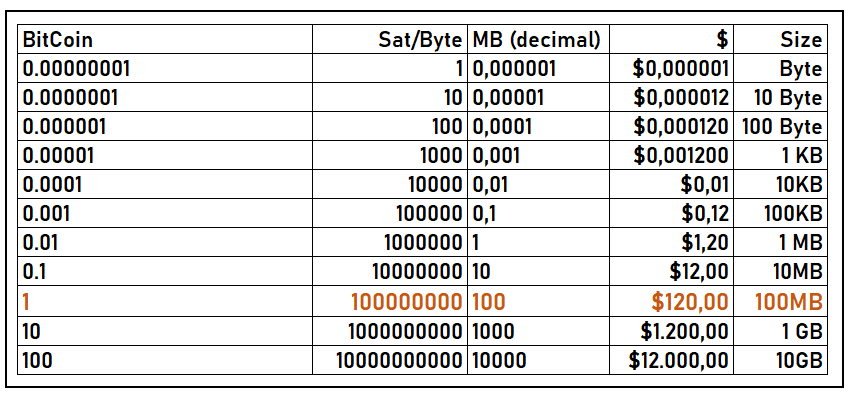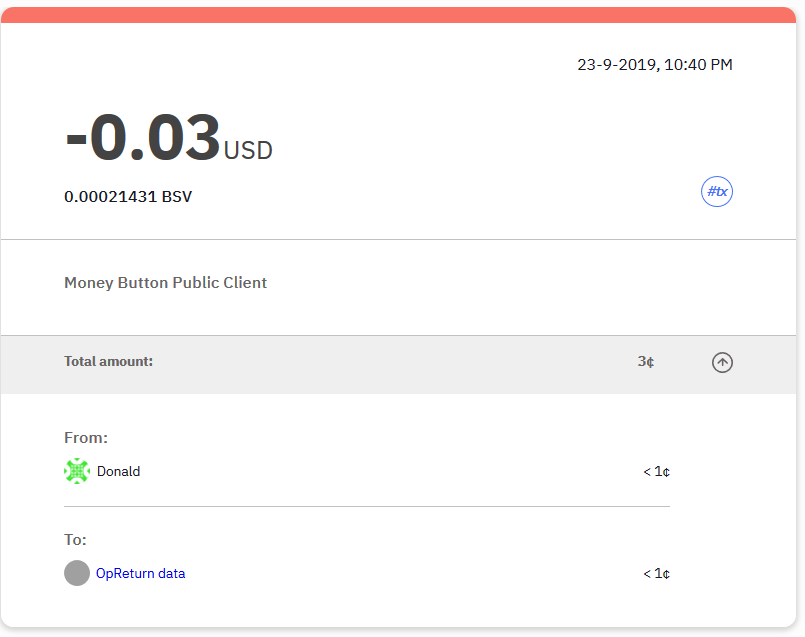Bitcoin for Business Part 2: Data Costs

After reading the MetaNet protocol, and kind of understanding it, you will quickly see a blue ocean of possibilities for all sorts of services and applications purely from a technical point of view. But whether any of those services and applications imagined could create a nice profit is a question often overlooked in the tech-oriented BitCoin society.

Cost of submitting data to the BitCoin SV network?
In any other professional industry you won’t go far without basic analysis, whether the service or application is even economically viable. So I am quite surprised how little public information is out there on this topic. It might be because there is no one-size-fits-all answer to this question.
If you ever need to write a business case for a service or application that utilizes the BitCoin SV network, you need to have some insight into costs. That is essential information if you need to create a cost-benefit analysis or want to compare prices with other solutions available in the market.
Let me help you with a method to estimate the cost of a single transaction according to your requirements. And once you have calculated how much a single transaction will cost for your use case, you can easily extrapolate from there. So let’s start.
Data size
The first variable we have to look at is how much data you’ll need for your use case. The data size required is something you will need to figure out. So what data elements or text fields are essential for your use case? Also, you will probably need to include some identifiers so you can index it later and use it in your application of service. A simple way to calculate your data requirement per transaction is to write out a couple of examples and see how much data it is. A simple online tool to calculate how many bytes you use is ByteSizeMatters. Once you have determined an average for byte size we have one variable locked down. As a reference, this article in MS Word is around 77KB.
Fee in BitCoin
The second variable is the fee for putting data on the BitCoin SV network. The current base fee is one satoshi per byte (Q3-2019). However, a few miners are giving hints that very soon they will lower fees by offering one satoshi per (X) bytes. For now, let’s not speculate about what might be and work with what we have today. So let’s imagine your application requires transaction with around the size of this article which is about 20 KB. 20 KB is 20,000 bytes (decimals), so if we are calculating with a price of 1 satoshi per byte, you’ll need to include a fee of 20,000 satoshi.
Fee in $
The third variable is the BSV token price. As we still live in 2019, and most companies do their accounting in their local currency, we want to have the fee calculated in the preferred unit or account. So the third variable is the price of BSV tokens in the local unit or account. I’ll use the US dollar as an example. If you do not use BitCoin as a speculative asset, but as a token for access to the BitCoin SV network, there are plenty of ways to mitigate currency risk. Let’s save this for another article. Let’s assume we can work with BitCoin SV market price or $ 120 per BSV. Then a 20KB transaction will cost you $0.024 per transaction.
I made a simple overview to help to calculate the cost price.

If you want an overview with the latest market price of BSV tokens you can download my Excel template here.
This template has a link to the CoinMarketCap.com API for accurate market prices. Just update the spreadsheet for the latest rates.
Now, let us use what we have learned to calculate what it cost me to put this template on the BitCoin SV network. The size of the template, including transaction data has a size of 21,423 bytes. The cost of submitting the file to the BitCoin SV network is 0.00021431 BSV. At the time of uploading (timestamp 2019-09-23 20:54:38 UTC) the BSV token prices according to coinmarketcap.com, was around $117,91. So 21,423 Bytes x $0.0000011791 = $0.025.
Here you can see an image of the transaction in my moneybutton.com account overview.

Here is the link to the transaction ID used on whatsonchain.com in case you want to check it for yourself.
It might be a better idea to use an average price over a more extended period rather than the latest market price because the BSV token price is still very volatile.
Extrapolate
Once you’ve figured out how much a single transaction for your service or application will cost on average, you can multiply that number to match your projected usage.
As an example, you want to know the annual cost of a daily newsletter on the metanet, and each day you’ll post a newsletter of about the size of this article. Because we have calculated the cost price of a single transaction, we can now extrapolate this with So that is 365 days. So $0.024 per transaction x 365 days is $8.76 annually.
Now let’s say you’ll need to upload an Excel file twice a day to the BitCoin SV network of around the size of my template. So $0.025 x 2 x 365 = $18.25 annually.
Conclusion
So now you have a simple approach for calculating a cost price estimate to upload your data. In summary:
- Estimate data size
- Calculate fee in BitCoin
- Calculate fee in $
- Extrapolate
All that is left is to figure out how to create a revenue stream higher than your cost price in order to make a nice profit. Good luck!



One Response
great calculations
well written thank you!